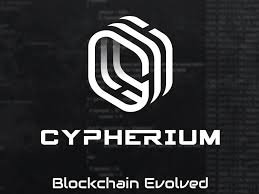Can Cypherium Speed Up Blockchain Mass Adoption?

The digital ledger has gained widespread attention, albeit for reasons unseen. Yet, there’s a lot of room for growth. Available data shows that only about 0.5% of the world population uses blockchain technology in any form. That’s more than 99% not leveraging the mammoth capabilities of the distributed ledger. This needs to change, but it won’t happen through meme coins and play-to-earn games. Good ol’ DeFi will do the trick.
What Is Cypherium?
It’s a layer 1 blockchain with a dual consensus mechanism. Cypherium aims to provide public institutions with an entry point into blockchain technology without the excessive cost of building a network from scratch.
For the folks at Cypherium, the goal of mass adoption is better suited when public institutions are brought into the picture. The blockchain hopes to be the stepping stone for these public institutions into the De-Fi ecosystem. Interestingly, the dash for CBDCs confirms this allusion. But how does Cypherium fare against the competition like Ripple? Everyone knows Ripple has been in an extended discussion with lots of big players in the traditional finance sector. Will Cypherium be the preferred option and why?
How Does Cypherium Support Mass Adoption Of Blockchain?
Cypherium’s approach towards encouraging mass adoption of blockchain entails indulging public institutions. There’s no need for traditional finance to be at loggerheads with De-Fi dapps as the goal remains the same – promotion of financial inclusion.
With public institutions getting their foot in the door, it’s easier for the rest of the population to join the bandwagon. Most people will only come on-board blockchain if their government/public institutions give the green light. That’s why Cypherium is putting down the infrastructure for a blockchain that’s friendly to public institutions. It achieves this through the dual consensus mechanism.
The Cypherium consensus mechanism is fast and scalable. Smart contracts can be deployed on the blockchain through its Cypherium Virtual Machine (CVM). Unlike the high-cost implication that comes with using blockchains like Ethereum, Cypherium is much cheaper. With a more affordable transaction fee, bystanders can proceed to use the Cypherium Network. The blockchain lowers the bar for the adoption of the digital ledger as users of all works of life can use the technology, regardless of their device.
Where Do The Partnerships Come In?
Like most players in the blockchain space, Cypherium has partnered with several entities in the digital space. From Google to IBM, the story remains the same: Cypherium has put pen to paper on collaborations that will speed up mass adoption.
Cypherium’s partnership with existing renowned outfits like Microsoft and IBM will help take DeFi to the next level. The blockchain has also teamed up with financial players in the OMFIF to improve on regulations in the current wild west of DeFi. This has garnered interest from central banks around the world, which will improve the odds of De-Fi, reducing the influence of bad actors.
How Does CPH Help?
Like most blockchains, Cypherium has its native token, CPH. Unlike what’s obtainable in the crypto space, CPH isn’t going to be listed just anywhere. To ensure acceptance in the traditional finance sector, the Cypherium team has been meticulous in navigating listing options for CPH. At the moment, CPH is trading on Liquid, a foremost, licensed exchange in Japan. Token listing on this exchange follows stringent criteria to minimize the risk exposure of its users.
Conclusion
Cypherium targeting institutions isn’t a popular route for mass adoption, but it gets the job done. The blockchain has all it takes to get the necessary institutions on board. And the team is doing just that.
RESOURCES ON CYPHERIUM:
WEBSITE: https://cypherium.io/
GITHUB: https://github.com/cypherium
TELEGRAM: https://t.me/cypherium_supergroup
TWITTER: http://twitter.com/cypheriumchain
FACEBOOK: https://www.facebook.com/CypheriumChain/